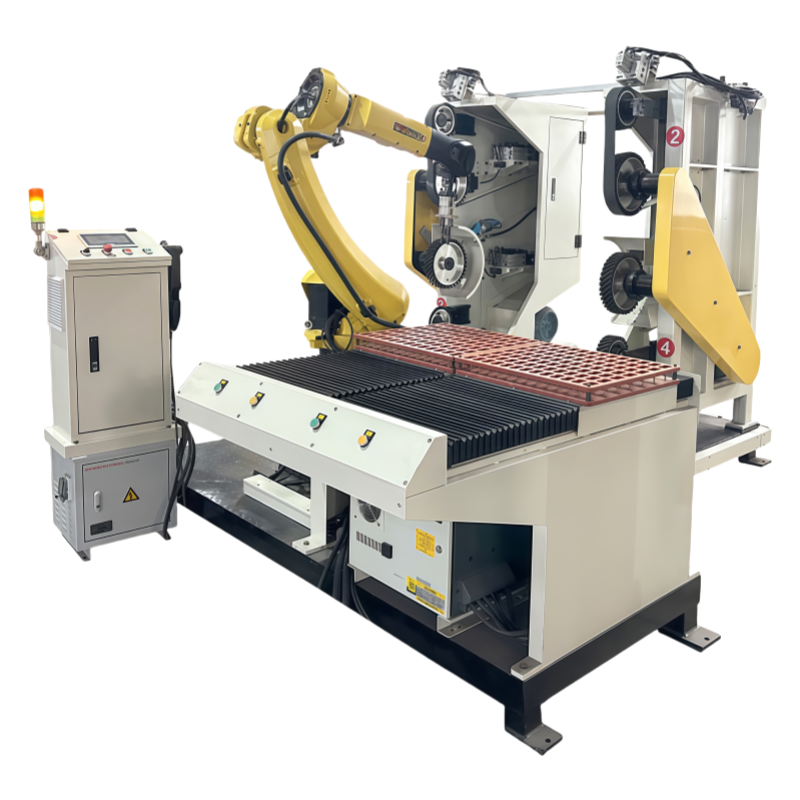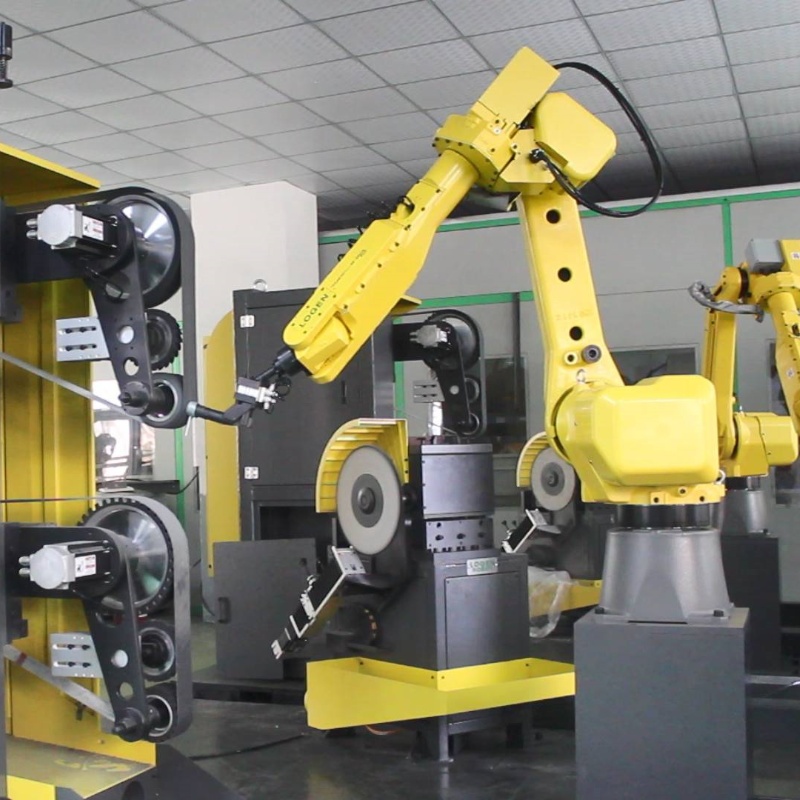FANUC Robotic Sanding and Deburring Systems for Hardware Handles and Plates
FANUC’s Robotic Sanding and Deburring Systems offer a complete, automated solution for grinding, sanding, deburring, polishing, and buffing of hardware handles, plates, and various other metal components. These robotic cells are designed to provide high precision, consistent surface finishing, and superior quality, making them ideal for manufacturers looking to enhance production efficiency, reduce labor costs, and improve part aesthetics.

Key Functions of the FANUC Robotic Sanding and Deburring Systems:
Grinding:
Function: Grinding is used to remove material from hardware components, such as handles or plates, to correct dimensions and eliminate surface imperfections.
Process: The robotic arm uses abrasive tools (such as grinding wheels or belts) to remove material and shape the workpiece.
Benefits: Provides an even surface and helps with achieving the correct part dimensions before further finishing processes.
Sanding:
Function: Sanding smooths rough surfaces, removing scratches, and preparing the surface for finer finishing steps.
Process: The system uses a series of sanding pads or belts with various grit levels to refine the surface.
Benefits: Ensures that the surface is uniformly smooth, free of visible marks, and ready for polishing or buffing.
Deburring:
Function: Deburring eliminates sharp edges, unwanted burrs, and material residue left after machining, cutting, or forming.
Process: The robotic cell employs specialized deburring tools such as brushes, abrasive discs, or rotary tools to safely remove burrs without damaging the part.
Benefits: Ensures parts are safe to handle, improves the quality of assembly, and enhances both the aesthetic and functional properties of the components.
Polishing:
Function: Polishing provides a smooth, glossy finish by removing fine scratches and imperfections.
Process: Robotic polishing heads use polishing wheels and compounds to create a smooth, reflective surface.
Benefits: Enhances the appearance of hardware handles, plates, or other parts, offering a high-quality, professional finish.
Buffing:
Function: Buffing is the final step to achieve a mirror-like finish on the part.
Process: The system uses soft buffing pads with specialized compounds to smooth the surface and add gloss.
Benefits: Creates a shiny, flawless finish that is especially important for parts that require a premium look, such as decorative handles or components in high-end appliances.
Process Workflow of the Robotic Sanding and Deburring Systems:
Part Loading:
Grinding:
Sanding:
Deburring:
Polishing:
Buffing:
Quality Inspection:
Part Unloading:
Materials and Applications:
Advantages of FANUC Robotic Sanding and Deburring Systems:
High Precision: The robotic arms provide consistent results, ensuring high-quality finishes on all parts, whether they are small handles or large plates.
Automation: The system reduces the need for manual labor, streamlining production and minimizing human error.
Increased Throughput: Automated processes increase the speed of production and allow for 24/7 operation without compromising quality.
Cost-Effective: By reducing manual labor and improving process efficiency, these robotic systems lower production costs over time.
Flexibility: FANUC robotic systems can be adapted for different part sizes and types, making them versatile for various hardware components.
Improved Safety: By automating potentially hazardous processes like deburring, the system ensures safer working conditions for operators.
Conclusion:
FANUC’s Robotic Sanding and Deburring Systems are an ideal solution for manufacturers of hardware handles, plates, and other metal components. The combination of grinding, sanding, deburring, polishing, and buffing ensures that parts are not only functional but also aesthetically pleasing. These robotic cells increase efficiency, reduce costs, and ensure consistent quality, making them a valuable asset in industries like kitchen hardware, bathroom accessories, and furniture manufacturing.










